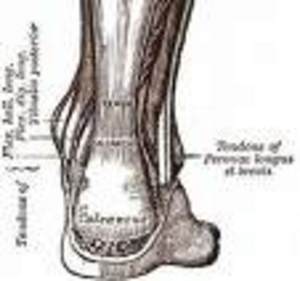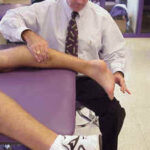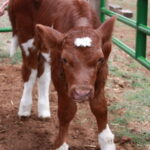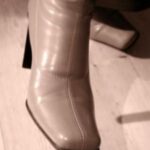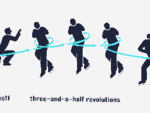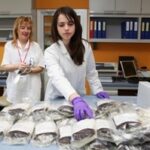ACHILLES TENDON PAIN
Where the Achilles tendon is located and what it does:
The Achilles tendon is the largest tendon in the body. It is the thick, rope-like cord on the back of the heel that connects the heel to the calf muscles. This tendon supports your entire body weight with each step. The Achilles tendon can be subjected to up to 3-12 times a person’s body weight during a sudden sprint or push off.
Causes of injuries to the Achilles tendon:
Many things can cause injury to the Achilles tendon: Accidents, poorly chosen, ill-fitting shoes, overuse, mechanical abnormalities and misalignment (unequal leg length, short or tight Achilles tendons or calf muscles, weak calf muscles, misshapen foot or heel bones), side effects from certain medications, weak or tight calf muscles, a sudden and too-fast increase in exercise, and increasingly more powerful movements while exercising. Flat feet can also cause Achilles tendon pain.
Conditions of the Achilles tendon:
The following injuries can develop: Achilles tendonitis, Achilles tenosynovitis, tennis leg, Achilles tendon rupture:
• ACHILLES TENDONITIS: This is a condition of irritation and inflammation of the large tendon in the back of the ankle. The soreness and stiffness comes on gradually and continues to worsen if treatment is not undertaken. This is a common injury among runners.
• ACHILLES TENOSYNOVITIS: This condition occurs in the Achilles tendon sheath rather than in the tendon itself. Achilles tenosynovitis causes scaring and fibrosis that can restrict the movement within the tendon sheath.
• TENNIS LEG: This is a rupture at the connection between the calf muscle and the Achilles tendon.
• ACHILLES TENDON LACERATION AND CRUSHING: The tendons may be either partially cut or completely severed by strong sharp edges such as lawn mower blades or crushed by a large object falling on the Achilles tendon.
• ACHILLES TENDON RUPTURE: A rupture or tear of the tendon can be partial or complete. A partial rupture is more common than a complete rupture. Rupture comes on suddenly, sometimes accompanied by a popping sound. This injury can be debilitating. A full rupture splits the Achilles tendon so it no longer connects the heel to the calf muscle. Normal walking is impossible. When the rupture is complete, light pinching of the Achilles tendon with the thumb and the forefinger will reveal a gap in the tendon. These accidents most commonly happen during sports when the athletes have not been training or have been doing very little training and happen mostly in sports requiring sudden stretching like in sprinting and racquetball and in long distance running.
It is not completely known why the Achilles tendon is so prone to degeneration, but it may be due to the relatively weak blood supply to the tendon. Research for other causes is ongoing.
Treatment for Achilles tendon pain:
There are many treatments for Achilles tendon pain. These remedies can be as simple as orthotics to as serious as surgery.
Achilles tendon surgery is generally the treatment of choice for a ruptured or torn tendon. Other remedies may help Achilles tendon pain and other conditions. Some over-the-counter therapies such as infrared LED light therapy products, an Achilles heel sleeve that holds ice packs, elastic braces to support the arch and foot muscles and various boots and braces to immobilize the foot may be tried.
Traditional treatments for Achilles tendonitis and pain such as rest, non-steroidal anti-inflammatory drugs, orthotics, cortisone injections, icing, ultrasound and physical therapy may be helpful.
The best remedy for Achilles tendon pain is PREVENTION of an injury in the first place.
General Injury Prevention:
• Regular exercise
• Good diet (insufficient calcium could lead to tight muscles, resulting in excess Achilles tendon strain) including plenty of water.
• Get enough sleep.
• Maintain good health by maintaining a good weight, avoiding smoking, excessive caffeine, and alcohol and drugs.
• Take good care of your feet. Take care of any foot or leg growth or dislocation. These things can throw off your normal stride which strains the foot and leg muscles and tendons including the Achilles tendon. See a physician for any growths or injuries and have them treated properly.
• Do most of your exercise on moderately soft, rather than hard surfaces. Too soft a surface is bad as it stretches the Achilles tendon too much.
• Increase exercise levels in small rather than big increments. Ten percent increases are good. Resist the urge to dramatically increase your workout level when you are feeling fit. Be particularly aware of gradually increasing the distance, speed and incline while walking, stair climbing and running. These gradual increases also include the power of the sudden starts needed in racquet sports and sprinting.
• If you are feeling like you are getting sick, reduce your workout level. Do not work out in very hot or very cold weather. Gradually work your way back up to your previous level.
• Learn to differentiate soreness-sore muscles from exercising is good. Aches, pains and tightness are bad.
• Wear the right shoes. Achilles tendon injuries can be caused by mechanical issues like wearing the wrong shoes. Wear the correct shoes for conditions such as high arches, low arches, uneven leg length, and other bio-mechanical issues.
• Warm up before stretching and exercising. A minimum of 10 minutes is needed to heat up the muscles. Focus on the leg muscles, paying special attention to the calf muscles.
• Stretch again after exercising to prevent tightness, which can lead to undue strain, and tightness of the muscles.
Practicing these preventive measures can greatly decrease the risk of an Achilles tendon injury.
Reference:
- ACHIELLES TENDON RUPTURE: www.highbeam.com/doc/1G1-86649791.html ACHILLES TENDON DISORDERS IN ATHLETES: ajsm.highwire.org/cgi/content/abstract/30/2/287 ACHILLES TENDON INJURIES: www.arthroscopy.com/sp09009.htm
